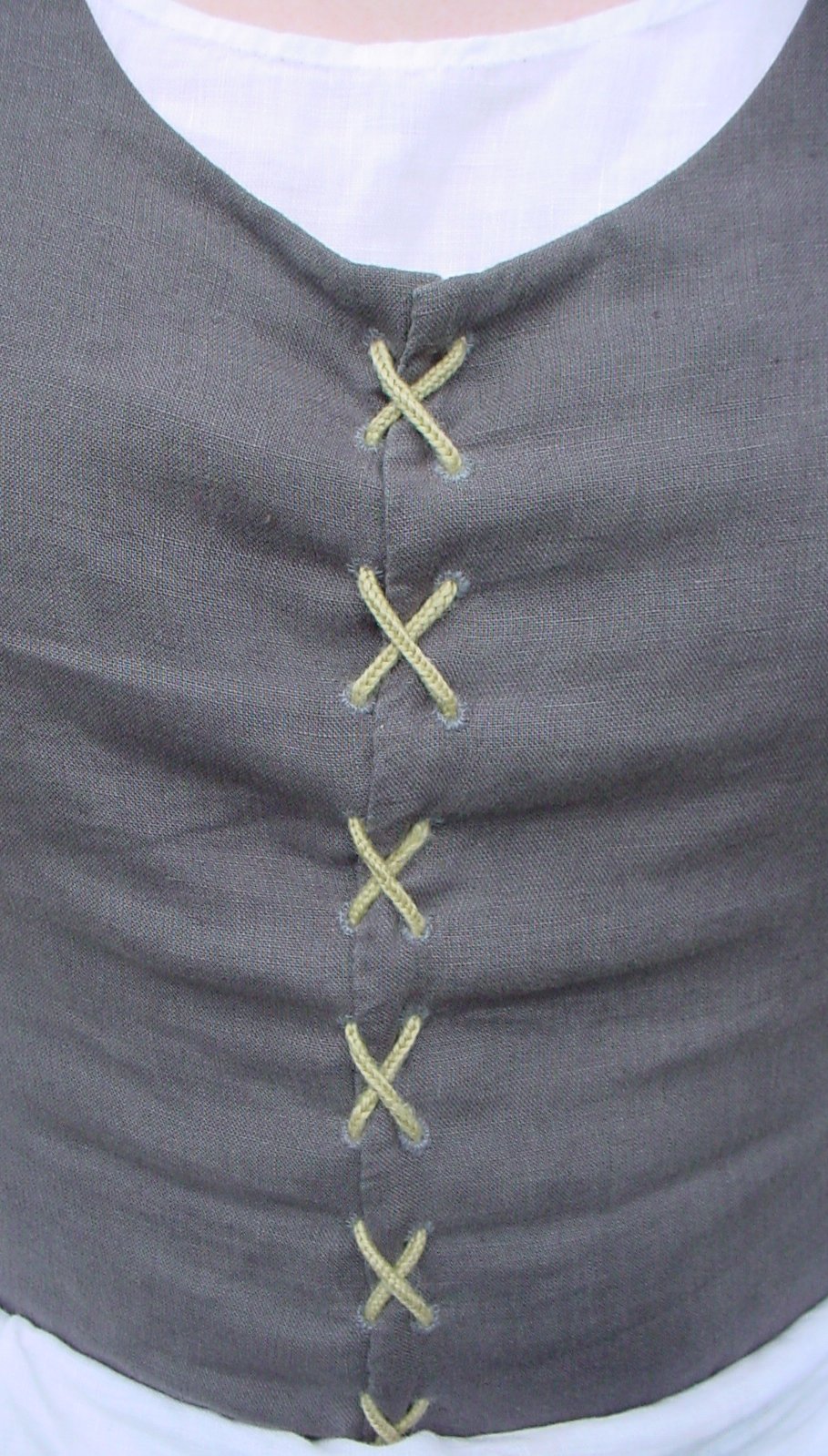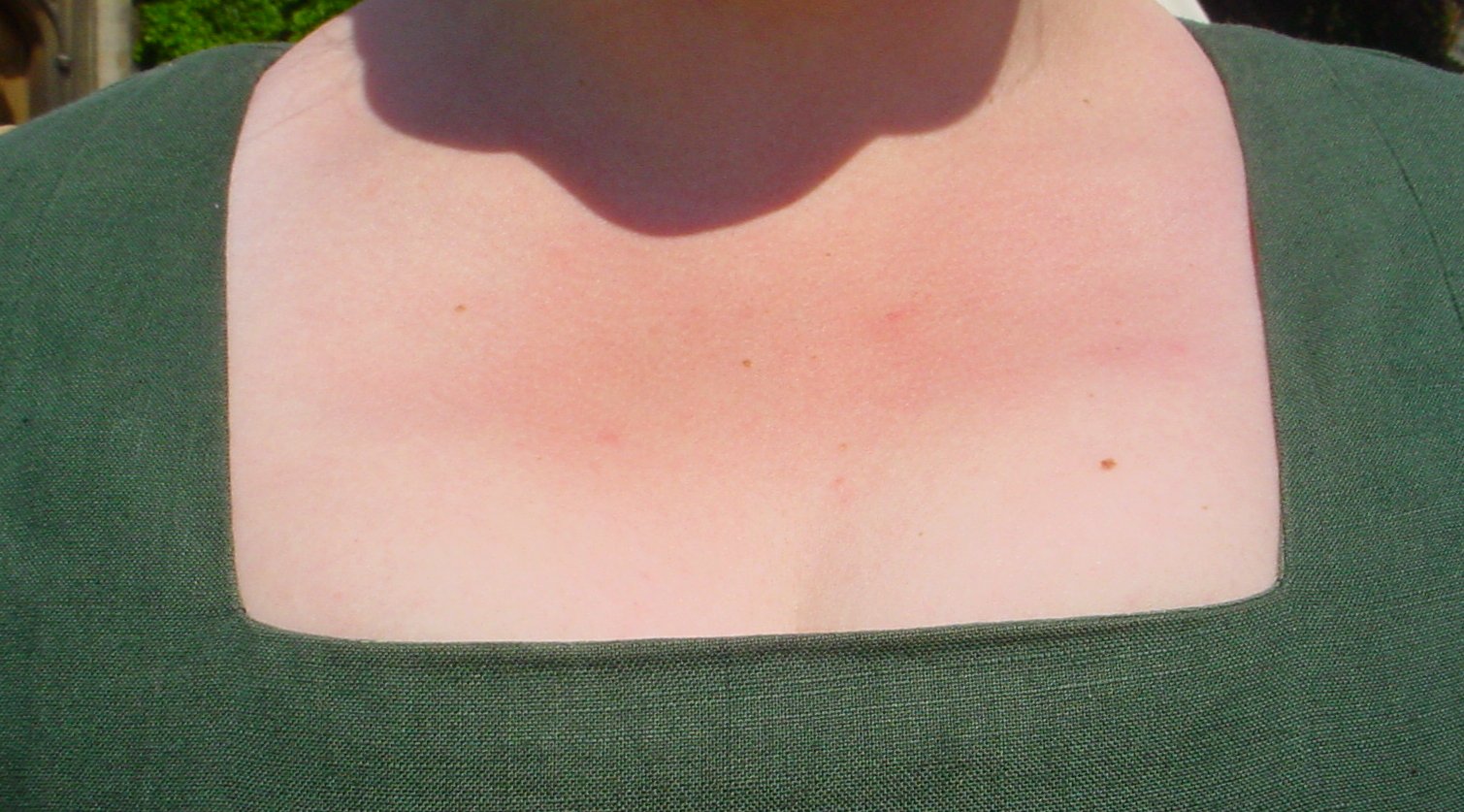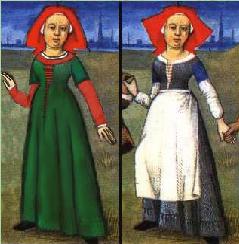The Kirtle
Kirtle
This is your basic garment. It has a fitted body and a flared skirt. Waist seams do exist but as a general rule dresses are made with the body and skirt cut in one piece. The waist should be at your natural waist line or slightly above. The modern "tit and flare" dresses are very similar in design, relying on shaped panels rather than darts to fit the dress. The front seams tend to sit to the side of the bust rather than at the widest part giving a slightly fatter shape compared to the modern shape. At this point I will point out you shouldn't be wearing a bra, your dress should be fitted enough to keep you in place and you wont be able to get the look right with one on. I can personally vouch that even if you are well above average cup size this will work.
The kirtle was what was worn underneath the gown. Only the very lowest in society would wear a kirtle without a gown! i.e. field hands and those doing strenuous manual labour etc.
Kirtles in England tended to be made out of wool outers, with a linen lining. On the continent it was common for women to wear linen kirtles underneath their gowns, due to the temperature difference. I would suggest you keep this in mind when you are planning your kit. (My usual kit is of a linen kirtle which I wear under a wool gown. I would refrain from just having a linen kirtle.)
Material: Pure wool and pure linen, about 4.5m of each.
The kirtle was what was worn underneath the gown. Only the very lowest in society would wear a kirtle without a gown! i.e. field hands and those doing strenuous manual labour etc.
Kirtles in England tended to be made out of wool outers, with a linen lining. On the continent it was common for women to wear linen kirtles underneath their gowns, due to the temperature difference. I would suggest you keep this in mind when you are planning your kit. (My usual kit is of a linen kirtle which I wear under a wool gown. I would refrain from just having a linen kirtle.)
Material: Pure wool and pure linen, about 4.5m of each.
Colours : Any appropriate to your station.
Panels
Most dresses are made with 8 panels but other numbers are possible (I would suggest 6 panels minimum). There are few surviving dresses in existence, but from those that are, and pictures, there are normally seams at the side of the bust and similarly placed at the back and often several panels under the arms. It was not uncommon for dresses to be made from 12 or 16 panels!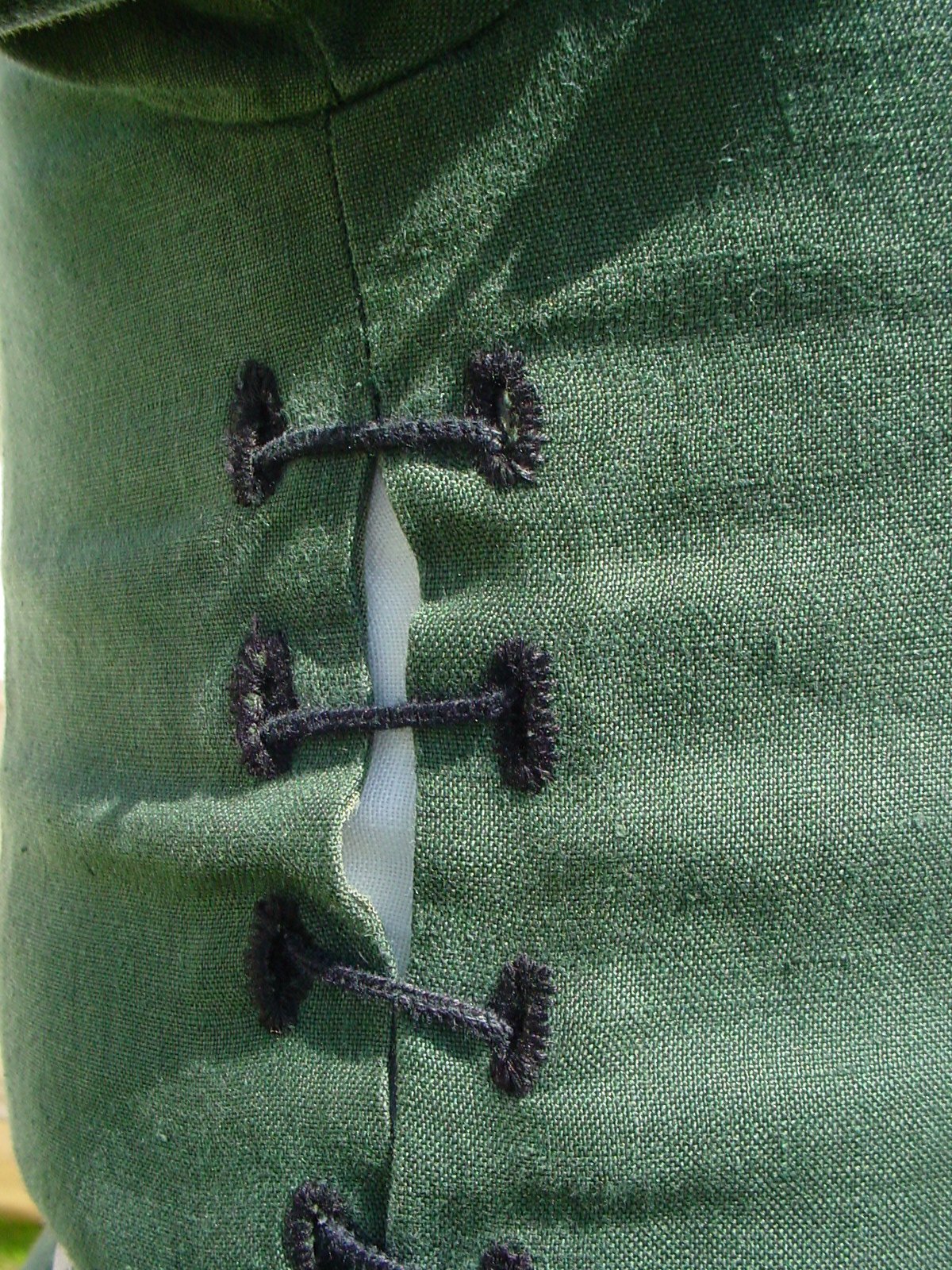
With 8 panels you can have all the waist measurements the same, thereby needing only one skirt pattern which you attach to each body pattern in turn for cutting out purposes. Skirts need to be full, I normally go for about 4 - 5 yards of hem for a basic dress, they should also be either floor length or just missing the floor. Piecing in bits to enlarge panels and also adding extra gores are both authentic techniques to increase skirt size without wasting lots of material.
You may also want to make the kirtle side, front or rear fastening.

With 8 panels you can have all the waist measurements the same, thereby needing only one skirt pattern which you attach to each body pattern in turn for cutting out purposes. Skirts need to be full, I normally go for about 4 - 5 yards of hem for a basic dress, they should also be either floor length or just missing the floor. Piecing in bits to enlarge panels and also adding extra gores are both authentic techniques to increase skirt size without wasting lots of material.
You may also want to make the kirtle side, front or rear fastening.
Sleeves
Sleeves are normally straight and tight, make them as tight as you can without making them uncomfortable as you will need to be able to work in them, and in hot weather extremely tight sleeves are unbearable, be particularly careful at the elbow as you need room to bend your arm.
The lower sleeve can be split and pointed or buttoned tight which means you can roll them up if you are washing up or cooking. You can, if you wish, not attach the sleeve to the body under the arm, this gives you more movement while having a tight sleeve. The sleeve can also be attached with points rather than sewn on. However, you shouldn't wear such a dress without the sleeves, if you can't bear wearing full sleeves when it's very hot make a second set which are 3/4 the way to your elbow, or have the sleeves sewn in at the shoulder and laced at this point. If you are short of material you can have sleeves a different colour to the dress.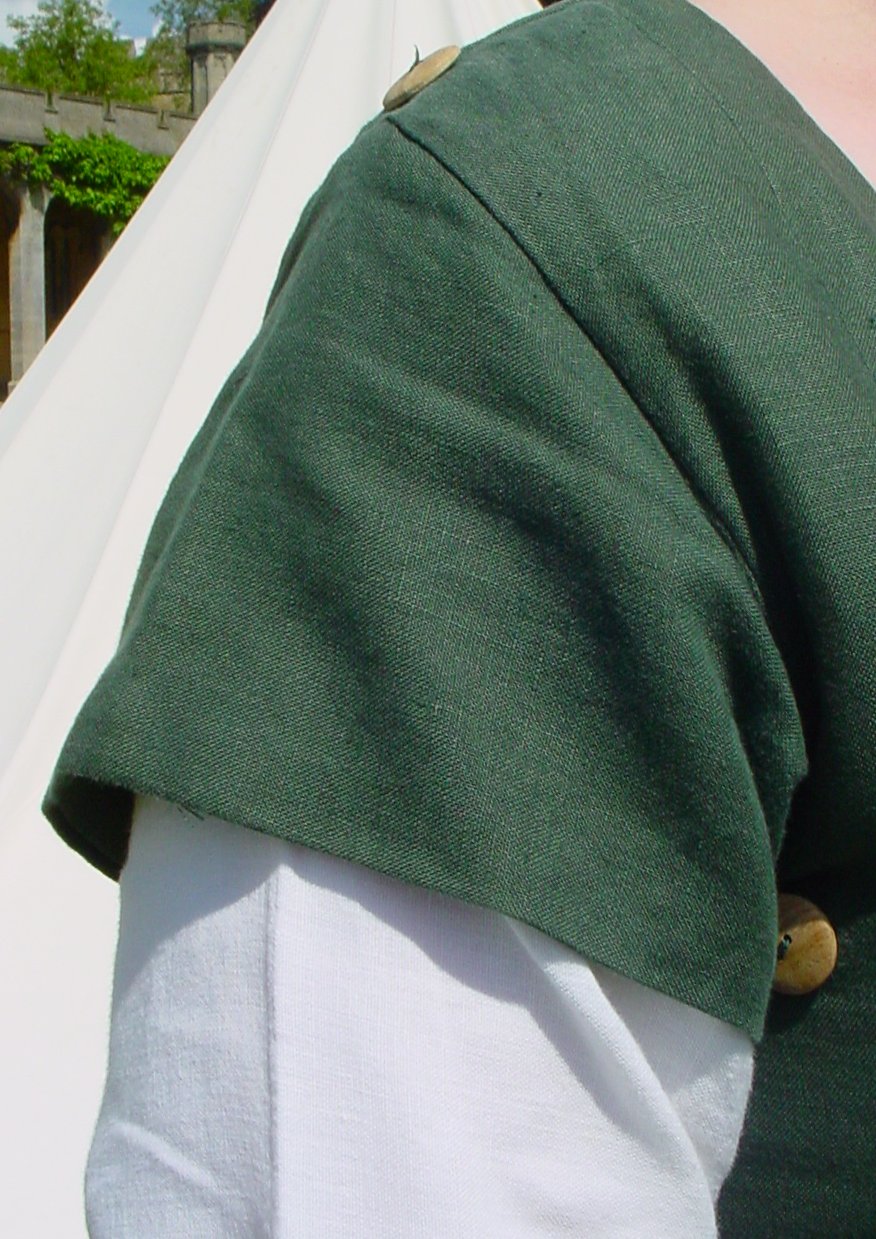
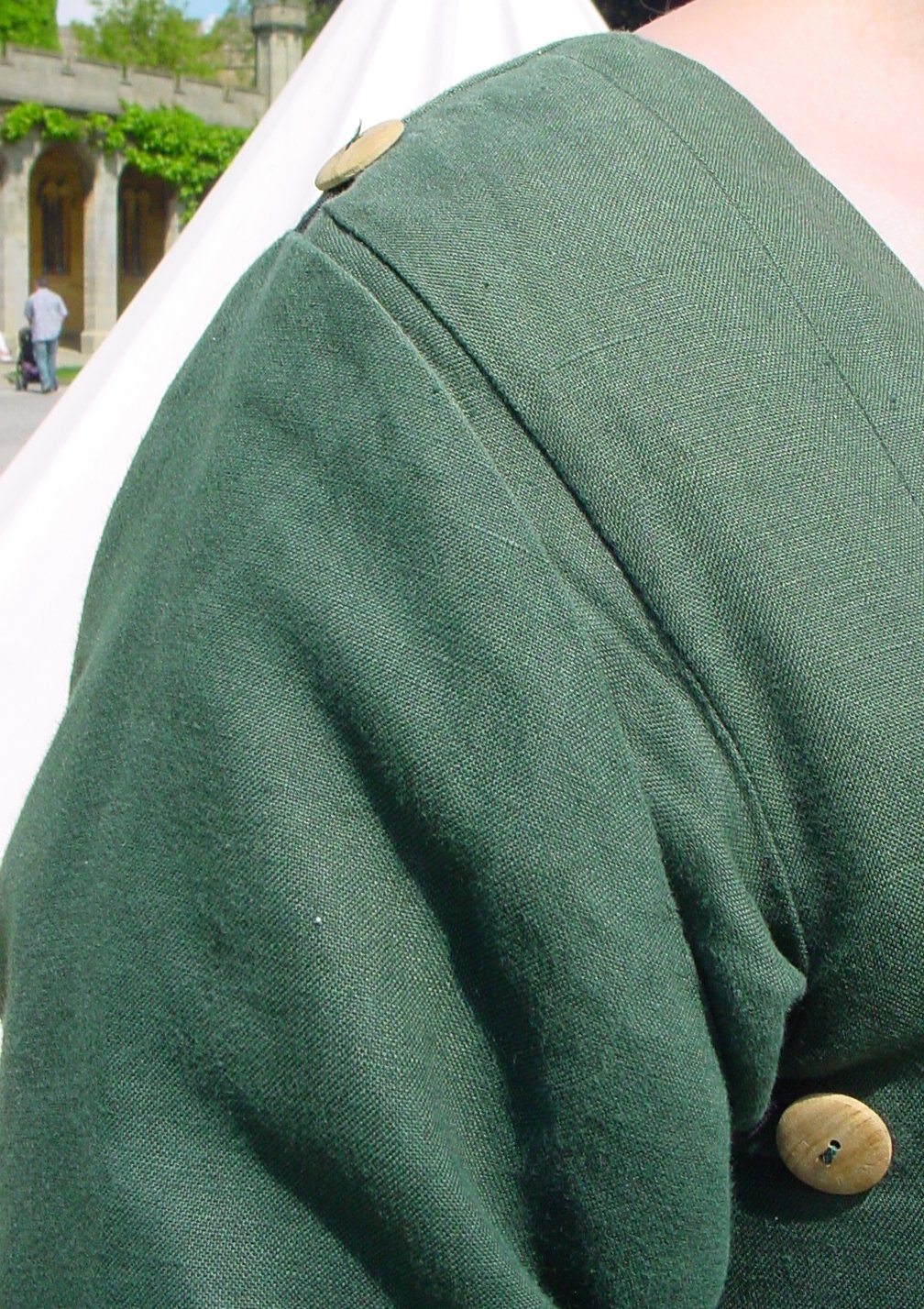
The lower sleeve can be split and pointed or buttoned tight which means you can roll them up if you are washing up or cooking. You can, if you wish, not attach the sleeve to the body under the arm, this gives you more movement while having a tight sleeve. The sleeve can also be attached with points rather than sewn on. However, you shouldn't wear such a dress without the sleeves, if you can't bear wearing full sleeves when it's very hot make a second set which are 3/4 the way to your elbow, or have the sleeves sewn in at the shoulder and laced at this point. If you are short of material you can have sleeves a different colour to the dress.


If you are doing more manual work during the day, you may want to consider making some over sleeves which will protect your kirtle sleeves.
Necklines
The neckline should be a moderate scoop and reasonably wide but don't make it so wide it falls off your shoulders all the time. The neck should not be so low as to show lots of cleavage at this level and is often quite modest. Squaring off the scoop starts to happen towards the end of the century, developing to a true square neck right at the end. As we generally do up to 1485, a true square neck is not recommended but the intermediate stage can be, as long as you are careful of the occasional earlier dated events. Dresses are normally fastened at the front, leave it open to a little below the waist, enough so you can get it on, this is laced up using one long lace from bottom to top. 